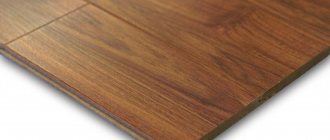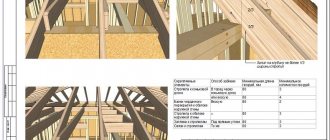To select a high-quality wood router, you need to pay attention to many factors, including an objective assessment of the owners of such devices who have already purchased the device for their personal use. The entire rating of hand-held wood routers for 2022 will be based on the opinions of real users, as well as experts who pointed out certain nuances.
Manual wood router
Purpose
With its help, various types of carpentry and construction and finishing work are performed. This is a selection of complex and simple profiles of various configurations, a selection of fits for door and frame hinges, door locks and handles. As well as preparing complex and simple connections at the corners of frames, in the middle of furniture pieces. A separate direction is figured wood carving, cutting out arches and circles of different sizes.
Some tips
In the following articles we will continue the story about woodworking techniques and the tools used.
Milling cutters are classified mainly by their purpose and shape. The most common of them are profile, grooved, for cutting quarters, for chamfering, conical for cutting grooves and dovetail joints. In addition, the home carpenter, although less often, has to deal with such wood cutters for a manual router as end cutters, fitting cutters, type cutters, for processing edges and ends for gluing, and also for cutting out a T-shaped groove.
Which manufacturer should you prefer?
A milling cutter is chosen not only by technical characteristics. Two more factors: price and brand reputation. If there are no restrictions on the purchase amount, you should choose well-known brands with a long history. And that's why:
- Such companies have been developing and improving their products for many decades. They have special design bureaus, testing laboratories, and a strong staff of design engineers. As a result, it is these brands that achieve the best performance in all areas: ergonomics (ease of use), efficiency and productivity.
- Famous brands value their reputation. Only manufacturers for whom reputation does not matter can throw a batch of defective milling cutters onto the market under a new name and then disappear. There are many well-known brands, and they constantly compete fiercely with each other, which also stimulates improvement of product quality and, if possible, keeping prices to the minimum.
The two most famous brands in this area are the European (German) Bosch and the Asian (Japanese) Makita. It is quite possible that their production facilities are located in China today. But full control over quality is maintained; equipment, designs, and technologies belong to the brands.
Today, when purchasing such milling cutters, the main thing is to avoid counterfeit goods, which can also be produced in China under the brand label, but in other production facilities.
What does drying out lead to?
A typical case: you made a shed at your dacha to store household equipment and for other needs. They did it for themselves, so they pulled together the boards from which the walls were made, carefully, without the slightest crack. Two or three months pass; the boards dry out and the entire wall glows with cracks. In winter, snow blows through them; in summer, the wind blows dust inside the barn.
Shrinkage reaches 10-13% of the linear size. That is, a board with a width of 100 mm after drying is reduced to 88 mm.
To prevent this from happening, you need to use quarter boards for wall cladding. A wall covered with such boards will never have through gaps. With their quarters, neighboring boards overlap each other and when they dry out, through cracks no longer appear.
Unfortunately, lumber is very rarely sold with a quarter finished. Therefore, an amateur craftsman should know the ways in which boards can be modified if necessary.
Main characteristics that you should pay attention to when choosing
In addition to the quality and ergonomics of the entire product, technical parameters are extremely important.
Engine power
The power of the electric motor of milling machines varies over a wide range - from 350 W to 2300 W and is selected based on the work to be done. If you have to process small parts with a shallow profile (fitting under door hinges, processing the edges of boards) or perform figured carvings, a low-power option is better suited, because:
- The weight of the router is lighter, more convenient to work with;
- costs less;
- consumes less energy.
If you have to choose deep grooves (for a door lock, table fastenings) or use a milling cutter with a complex profile with a large diameter, the power of such a router may not be enough. Perhaps it will cope with the task, but with overloads, which is fraught with rapid wear. If the load is too heavy, the engine may simply burn out, or the gearbox parts may break.
The average version with a power of 700 W-1100 W is capable of solving most tasks for a carpentry and furniture workshop. Therefore, such models are the most popular.
The most powerful milling cutters 1700 W-2300 W are purchased for special tasks. They are quite heavy (about 5 kg or more), and it is inconvenient to work with small workpieces. Suitable for cutting deep grooves and wide complex profiles with a large diameter cutter. Their cost is higher than that of low-power ones. Energy consumption is also significant. Therefore, it is not worth buying such a tool unless necessary.
Power type
Battery options are limited in power, and the power in watts (W) is not indicated on such models. Only the voltage of the battery and electric motor in volts is 12 V, 16 V or 18 V. The higher the voltage, the more powerful the router.
Cordless edge router in action
The main advantage of cordless milling machines is their independent power supply. You can work without an electrical wire, which in some cases gets in the way. Independence from the network is relative. Charging the battery still requires mains voltage.
Cordless routers can be considered a special tool. They are used mainly as edge cutters and work with small diameter cutters. They can be indispensable, for example, when covering the ceiling. If the finishing sheet does not fit, the edge can be removed with a router directly under the ceiling. In this case, the wire will not be pulled down. The router itself weighs a little, which is convenient.
They can also be used during finishing when there is no power supply in the building yet. It is convenient for small work, for example, selecting ornaments (wood carving).
But the main tool of this type is network routers (220V). They have no restrictions on engine power for this type of tool. They can be powered up to 1700 W and are capable of performing all the tasks intended for such a tool.
Milling depth
The maximum recess sizes that a router can make are measured in depth and width. Depth is the distance from the top plane of the workpiece to the end of the sample (vertical). Width is the distance from the edge of the workpiece to the end of the sample (horizontally).
The depth and width of the milling depend on the profile of the cutter and how far it extends beyond the support platform. A large diameter cutter makes a wide cut and vice versa. A cutter with a high cutting part makes a deeper cut.
The maximum sample sizes depend on the hardness of the material being processed. Engine power matters here. A lightweight milling cutter may simply not be able to handle a large-diameter cutter that makes deep and wide cuts.
Therefore, manufacturers do not indicate the depth and width of milling in the technical specifications. But the working stroke of the cutter must be indicated. This is the distance by which the collet (cutter clamp) moves relative to the working platform. For example, the working stroke can be 50 mm or 80 mm. This means that the cutter can be maximally extended beyond the support platform into the workpiece by 50 mm or 80 mm.
These data, indicated in the manufacturer's specifications, are not final. You can increase the routing depth by using a cutter with a longer shank or by moving it in the collet. But the cutter must be securely fastened.
As a rule, the more powerful the router and the larger its dimensions, the greater the stroke of the cutter. If you have to process large workpieces, this parameter is important.
Maximum cutter diameter
The larger the diameter of the cutter, the more difficult it is for the router to work. Reason: a thin cutter has a small lever (distance from edge to center). A large diameter cutter is a large lever to counteract the rotational force of the engine.
If you have to work with large-diameter cutters, you should purchase a high-power milling cutter.
Manufacturers do not always indicate the maximum diameter of the cutter in the technical specifications. The space at the collet (clamp) of most routers (except edge routers) is spacious enough to accommodate a large router bit. But this does not mean that a low-power model will work with any cutter without overload. There are no exact technical recommendations on the ratio of power in W/cutter diameter. But in general, for large diameter cutters you need a milling cutter with a power of over 1000W.
Example when the technical data indicates max. cutter diameter – milling cutter Fiolent MF3-1100E F0029.
- power 1100 W;
- Max. cutter diameter – 26 mm.
Collet size
The cutter shanks and collets for clamping them have several standard sizes: 6 mm, 8 mm, 10 mm, 12 mm. Unlike a drill chuck, which can be used to clamp a shank from 1mm to 10mm, a collet is designed to only fit one size.
The router often comes with replaceable collets. For example, 8 mm and 10 mm. These are the most popular sizes. Shanks 6 mm and 12 mm are used less frequently. But if you buy a light or powerful router, most likely, the light router will have 6 mm and 8 mm collets, the powerful one will have 10 mm and 12 mm, and possibly 8 mm.
Therefore, before purchasing a router, you should take a closer look at the diameters of the shanks of the cutters that you plan to use. It is possible that you already have a set of cutters. The main thing is that the necessary cutters fit the new router according to the size of the collet.
Maximum number of revolutions
The higher the speed, the better the surface treatment of the sample. Many milling cutters have a speed control function. But it is practically useless, since after testing work at different speeds, most operators set the maximum speed.
At low speeds, the cutter tears the wood or the engine does not pull, since the reduction in speed occurs due to a decrease in the current supplied to the electric motor.
Different brands compete with each other, trying to overtake competitors in all quality parameters, including turnover. Average values for today are 25,000 rpm - 30,000 rpm. Leading leading brands achieve 33,000 rpm, and you can trust them, since they cannot commit fraud - competitors will check.
An unknown Chinese manufacturer may suddenly claim 35,000 rpm.
But this is most likely just a marketing ploy. We must remember that such ultra-high speeds mean extra loads on the spindle bearing and other components. And the law of physics “what you gain in speed, you lose in strength” applies. That is, the cutter can rotate quickly when idling, but weakly and under load it can lose speed significantly.
Therefore, when choosing, speed is an important criterion , but it is better without “records”. 25,000 rpm - 30,000 rpm is quite enough for high-quality processing . The main thing is that the cutter does not lose much speed during operation, which is also affected by engine power.
Tool weight
The weight of the router can vary from 1.4 kg for light ones to 5 kg and higher for powerful models.
Weight is related to power, but not directly. If the milling cutter is of a high-quality brand, light, expensive alloys of magnesium and aluminum are used in its production. In cheap models, the same parts may be made of heavy ferrous metal.
There is a downside - too light weight with large, awkward dimensions may indicate low reliability of the product. There is a tiny motor in a huge body, gears inside are made of lightweight plastic, etc. This applies to unknown cheap brands.
Weight matters more or less for different jobs. If you have to frequently rearrange the tool, holding it in your hands will make it inconvenient to work with a heavy router.
When the router is simply placed with a platform on a long workpiece and moves along it, weight matters little.
Before buying in a store, it is better to hold the router in your hands and estimate the weight. When purchasing online, the weight must be indicated in the specifications.
Vertical manual milling device
Of all the hand-held power tools, the router is perhaps the simplest from a design point of view. Its equipment is attached directly to the electric motor shaft (spindle), i.e., torque is transmitted without the mediation of gears, belts, etc. Thanks to this, the cutter easily gains high speed.
The router body, also called the “head” or simply the “head,” moves up and down along guide rods that are rigidly mounted on a support platform. When the operator presses on the handles, the head goes down; when the pressure is released, the springs return it to its original position.
A milling cutter is secured to the motor shaft (spindle) using a collet clamp. When the head is lowered, the cutter smoothly plunges into the workpiece material to a given depth, the latter being adjusted using a stop. When the tool is subsequently moved horizontally, the sharp edges of the cutter drill out the groove.
1. Collet clamp for attaching the cutter. 2. Support platform 3. Stepped milling depth limiter. 4. Grip handle. 5. Vertical stop.
6. Handle for fine adjustment of milling depth. 7. Cutter speed regulator. 8. Milling cutter body with installed electric motor. 9. Accidental activation lock button. 10. Knob for fine adjustment of the rip fence.
11. Parallel stop. 12. Tightening lever. 13. Router on/off button. 14. Parallel fence adjustment screws. 15. Guide rods.
Additional functions
Additional features that are not available on all models include:
- work area lighting;
- the presence of a pipe for collecting chips with a vacuum cleaner, a dust removal adapter;
- smooth start;
- speed adjustment.
Basically these are little functional options.
If the workplace is well lit, backlighting is not needed. Do not look into the illumination zone while working.
A dust collector is useful when working in a clean or residential area. It is inconvenient to use in workshops - there is extra noise from the vacuum cleaner, the collection is bulky and interferes with working with the router, the bag quickly becomes clogged.
Soft start gently starts the engine without reducing the voltage in the network. The milling cutter begins to work smoothly, without jerking. A useful feature, but you can do without it.
Speed adjustment is required extremely rarely. Basically, milling cutters operate at maximum speed.
The remaining functions are standard and are available on all milling cutters: a button to prevent accidental activation, height adjustment of the cutter, eyes for a rip fence and a compass.
Quarter cutters (READING)
Such cutters differ from cylindrical slot cutters by the presence of thrust pins or bearings that guide the cutter along the edge, thereby ensuring the same width of the selected quarter. If it is necessary to select a narrower or wider quarter, replace the thrust bearing with another of the appropriate diameter or use a different cutter.
Read also: How to saw concrete with a grinder
If the cutter and its thrust bearing are of the same diameter, then such a cutter is considered as a fitting cutter (sometimes called “overrunning”), which is used to process edge overlays, veneers, etc. flush with the workpiece.
If the cutter has a thrust pin that rotates with the tool, traces from this pin remain on the processed base surface, which you have to put up with. Thrust bearings do not leave such marks behind them.
In addition, they produce prefabricated cutters and sets of cutters for various purposes (for example, for the production and subsequent connection of parts with a complex profile).
Ergonomics
Each manufacturer tries to arrange all the components as compactly as possible, and in such a way that it is as convenient to use the tool as possible. This works out differently for everyone. For example, Makita. Milling cutters from this manufacturer are pleasant to hold in your hands.
- centering (weight distribution) is maintained, the tool does not tip to the side, it does not need to be held with force;
- light weight;
- compact dimensions;
- depth adjustment is convenient.
As a result, working with such a tool is pleasant.
Other leading brands also have good user friendliness.
Cheap, low-quality routers can be clunky, bulky, and difficult to use.
It is better to hold the router before purchasing in a real store. By the way it fits in your hands, you can immediately assess the quality based on ergonomics. When purchasing online, you can only evaluate ergonomics by reviews.
Replacement of carbon brushes for different brands is organized differently:
- without disassembling the case, through the plug screws on the case;
- with disassembly of the housing.
The first option is much more convenient. But carbon brushes are rarely replaced. It happens that they last the entire service life of the router itself. Therefore, the replacement method is not very important.
The location of the power cord outlet and its length are important. A short cord will require an extension cord. If the lead is poorly positioned, the wire will interfere with work and there is even a risk of getting into the cutter.
Types of cutters for processing wooden workpieces
By purpose they are as follows:
So, we have decided that it is most convenient to use a rebate cutter to select a quarter. It has a cylindrical shape and is equipped with a bearing. The diameter of its cylinder is larger than the diameter of the bearing, which allows you to select a quarter of the desired depth in several passes of the cutting tool.
It is convenient to use a template when milling. The bearing, rolling along the template, forms the exact direction of movement of the tool, simplifies the work and makes the result neat and even.
Equipment
The standard package includes:
- the router itself;
- key for fixing the cutter in the collet. (Two keys, if the spindle is fixed not by a stopper in the body, but also by a key);
- parallel stop;
- replaceable collet for the shank of cutters of other sizes;
- user manual.
In addition to the listed accessories, the extended (full) package includes:
- compass (bar with a centering cone (needle) for processing circles);
- copy sleeve (for moving the router along curved templates);
- copy roller for working together with a parallel stop;
- adapter for connecting a vacuum cleaner;
- simple groove cutter.
Additional accessories are simple devices, inexpensive and do not increase the overall price of the kit by much. It happens that some devices are simply not needed. They lie on the shelf for years or are even thrown away. The opposite also happens when you have to buy some devices separately or make them yourself. For example, making a compass with your own hands is not difficult.
As a result: everything necessary for full-fledged work is included in any configuration. Full may be a nice bonus, but not fundamentally important. When choosing a router, it is the one that is evaluated first. Options are a secondary matter.
Blind selector
The device consists of two rulers (one on each shoulder of the groove) and two rods that rest on the edges of the workpiece. One ruler and one board are T-shaped at right angles. Gaps along the other strip and ruler allow you to install boards up to 300mm wide and select grooves up to 38mm wide. Two clamps in the adjustable bar are supported in the workpiece and secure the device in place.
To work, you need a set of guide bushings for the router. In this case, the ruler bushings should be slightly shifted to the side relative to the width of the groove.
The device is made of poplar, but Karelian birch plywood or MDF is also suitable. The T-nuts and MB screws are recessed so the cutter can slide over the lines without obstruction.
After production is completed, it is necessary to make inserts for installing the ruler. A piece of edged board about 450 mm long, 150 mm wide and 20 mm thick, cut to the same thickness along its entire length. It all depends on the size of the sleeve and cutter. Leave the tool in place, making four inserts, about 50mm long, about 25mm wide and equal to the thickness of the gaps. Ideally, the thickness of the liners should be equal to half the difference in diameter between the cutter and the sleeve.
Fine adjustment of the inserts is carried out when using them with installed rulers when milling along a short cut that was previously cut. Unscrew the adjustable ruler, place the trim between the rulers and the two inserts on each side.
Tighten the screws. Remove the liners, cut and mill the groove. If the cutout does not fit into the groove, adjust the thickness of the liners.
What to choose for your home workshop
Using a router in a home workshop involves long hours of work. Therefore, you need a high-quality model from brands with a good reputation.
Power is selected based on needs. The middle option is Makita RP0900K 900W . One of the most inexpensive models of the brand with such power due to the lack of additional functions - no speed control, no soft start. The homeland of the brand is Japan, the country of origin is China. Cost 8-10 thousand rubles.
A more serious option is Makita 3612 C 1850W . The price at the end of 2022 is 22-23 thousand rubles. The homeland of the brand is Japan, the country of origin is China. If you wish, you can find milling cutters of this brand made not in China, but in Japan. They cost a little more, but this is purely Japanese quality.
After watching the video, you can read the full review of the Makita 3612 C manual electric wood router and see the delivery set.
The representative of the German brand is Bosch GOF 130 06016B7000 1300W . price from 8 to 9 thousand rubles. Produced in China.
Making planks with grooves at home
Often you have to make furniture or make repairs at home, using the simplest methods and what is at hand.
If you need to make a groove in the board with your own hands, be patient and have the necessary tools:
Making a groove with a circular saw
Making a groove with a circular saw.
The optimal materials are wooden boards, bars and the like. The price of raw materials is minimal; in extreme cases, what is available on the farm is used. The most successful solution is a through, single open straight end connection.
The joint will be strong and reliable:
Note! To prevent the workpiece from being damaged, make cuts along the inner sides of the drawn lines. In this case, a visual correction is made for the thickness of the canvas.
Groove using a drill
The photo shows a groove being cut out with a drill.
The method is quite labor-intensive, but it can be called an alternative to the one described above. If you were unable to get a hand router, prepare a drill and chisel, ruler and pencil.
Note! It happens that a furrow with a concave bottom and a spike with a convex end are required. Before making the moon groove in the board completely, drill to a depth slightly less than required. Subsequent processing and adjustment can be conveniently done with coarse sandpaper or a round file.
Using a hacksaw on wood
Making a transverse groove with a hacksaw.
Well-done markings will help a lot here.
Select a hacksaw blade that is smooth and durable:
The best stripping models
Stripping milling cutters will ensure high-quality, quick removal of plaster and the removal of any other old coatings as part of the repair or restoration of any object.
Review of the best deburring routers for the home workshop based on customer reviews and ratings.
Metabo LF 724 S, 710 W
The advanced stripping milling cutter Metabo LF 724 S with a power of 0.71 kW is an ideal solution for carrying out restoration work, removing paint and varnish from wooden surfaces, and high-quality processing of folds.
The device is powered from a 220 volt network. The length of the cable for connecting to the outlet is 4 meters.
The device is equipped with a spindle lock option, carbide metal knives, and a pipe for connecting a vacuum cleaner.
The gearbox housing in this model is made of particularly durable aluminum alloy.
The noise level of operating equipment does not exceed 86 dB. The device is equipped with equipment, a case, an awl, and a combination wrench.
Specifications:
- power consumption - 0.71 kW;
- rotation speed - 10000 rpm;
- network cable length - 4 m;
- product weight - 2.4 kg;
- Features: cast sole, spindle lock, connection for a vacuum cleaner.
Advantages
- high quality milling;
- reliable and productive equipment;
- smooth adjustment of the removed layer;
- long network cable.
Flaws
- high price;
- decent noise level;
- Not a sealed dust container.
Special cutters
When making decorative selections, for example, ornaments, fonts, V-shaped (conical) engraving cutters are used. In this case, the milling machine is moved along the markings freely by hand. For drilling and making holes, cutters with a stop center and a trimmer are used. Holes for dowels are drilled with cutters 06, 08 and 012 mm. Sockets for furniture fittings are selected with cutters 015-35 mm. When working with cutters of larger diameter, the milling machine should be switched to lower speeds.
With the help of some cutters it is possible to form two mutually matching profiles, one of which is a counter profile. This can be a set of two separate cutters that complement each other (“profile-counter-profile”), or one cutter that creates its own counter profile when turning the workpiece to the other side.
Checking the operation of the electric planer
Before starting work, the selected power tool must be checked. Carefully inspect the body, cord, drum where the knives are attached. The rotation of this part must be free.
Important! We check the rotation of the drum manually with the instrument turned off. If the electric planer vibrates and when working, unevenness and burrs appear on the surface of the board, you need to check the sharpening and installation of the knives. If necessary, adjust the gap between the plates. The knife should protrude beyond the slabs by 0.5-1.0 mm; without this condition, the plane will not select a quarter. You also need to check the fastening of all knives.
Results
Above we have provided a ranking of the best bits for a hand router for 2022. Before deciding which set is best to buy, it is important to consider the following aspects:
- Pay attention to the material from which the blades are made. Carbide bits will last 50% longer than standard hardened steel (HSS) bits and can become dull due to heat and friction.
- How much a bat costs is an important indicator of quality. It's easy to find budget hand tool kits and order online from an online store or buy from your local supermarket. Unfortunately, the vast majority of them are disposable and are not effective for long-term use. On the other hand, novice carpenters need to have inexpensive consumables to gain experience.
It is important to avoid mistakes when choosing. The recommendations from the article will help you determine the appropriate kit option to meet your carpentry needs.
The best lamella models
Narrowly directed lamellar milling equipment will provide high-quality and accurate selection of grooves in home or industrial workshops.
Makita PJ7000, 710 W
The Makita PJ7000 lamella (keyway) router, equipped with a 0.71 kW electric motor, will allow you to comfortably select grooves, milling to a depth of up to 2 cm.
The device is equipped with a spindle lock, a protective limiter, and a system for connecting a vacuum cleaner.
The product is delivered in an ergonomic case along with a front handle, cutter and dust collector.
The device operates from a standard power supply and operates at a noise level of no more than 97 dB. The router weighs 2.5 kg without packaging and has overall dimensions of 13.9x14.5x30.2 cm.
Specifications:
- power consumption - 0.71 kW;
- rotation speed - 11000 rpm;
- milling depth - 2.0 cm;
- network cable length - 2.5 m;
- product weight - 2.5 kg;
- Features: spindle lock, connection for a vacuum cleaner.
Advantages
- quality of case materials;
- reliability and ease of use;
- no shortage of components;
- good performance.
Flaws
- slight play in the guides;
- hard network cable;
- high price.
Seam using an electric plane: step-by-step instructions
Step #1
First, the workpiece is placed on a carpentry bench and secured as tightly as possible with clamps. The fastener should be on the opposite side of the processing area.
Step #2
After this, the instrument is prepared. Set the angle stop at the required distance from the part. This way it will provide the required planing width and a 90° angle between the tool and the edge of the part.
Step #3
A depth stop is screwed onto the right side of the power tool.
Step #4
The cutting tool of the device should be installed as close as possible to the right edge of the sole.
Step #5
When everything is ready, turn on the electric planer and select the fold, pass by pass. Setting the maximum planing depth in one pass is not advisable. This point must be coordinated with the recommendations of the tool manufacturer.
Material for wood cutters
Milling cutters are made from high-speed steel (more affordable), from carbide (expensive) and with carbide brazed plates. The durability of carbide blades exceeds that of high-speed steel blades by almost 25 times. These cutters can also be used for processing materials with a high adhesive content (for example, chipboard and MDF boards), difficult-to-cut wood (for example, teak), plastic and aluminum. However, when processing soft wood, the best results are obtained with high-speed steel cutters, the blades of which can be sharpened.
The advantage of cutters with removable and rotating plates is that their working diameter remains constant. When sharpening the blades, it gradually decreases.
There are cutters with removable rotary plates: grooved (08.010 and 012 mm), for milling around the perimeter - 016 mm, fitting, for chamfering and quartering. Due to the high peripheral speed, large-diameter cutters are used only on stationary milling devices. Of course, the range of cutters is constantly expanding, and thanks to this, the technological capabilities of home craftsmen can also expand.
These are not all cutters for a hand router. There are many of them and we will try to tell you about them all.
Please advise which tool to use to select a quarter in the boards. The work is not regular, as needed. The boards are supposed to be used for cladding.
VG wrote: Please advise which tool to choose a quarter in boards
VG wrote: Circular cutter, for manufacturing in one pass - is it suitable for manual or not?
VG wrote: If they choose a quarter, how many meters (approximately) will the cutter be enough?
50 meters should be enough, then the edge needs to be corrected
VG wrote: approximate) In general, it makes sense to buy it for this and work like: making plinths, tongue-and-groove floorboards
It’s been written a hundred times already, the first pass of all the boards on a plane. Then you adjust the circular saw by a couple of mm, the board on the edge so that the circular saw on the 20mm edge does not fall over, collect several boards in a pack with clamps or attach an even block to the board. But that's what I personally do. First pass » > Second pass » >
Read also: Galvanic coating method
Personally, I choose a quarter with a Dioldov milling cutter and simply pee with delight.
Alexey wrote: I choose a quarter with a Dioldov milling cutter
Why don’t you use groove cutters?
For quarter and tongue and groove do you need a powerful router or is a simpler and lighter one enough?
VG wrote: For quarter and tongue and groove do you need a powerful router or is a simpler and lighter one enough?
alex_k wrote: with a plane in 4-6 passes (not all models choose a quarter, the depth is 2 mm at a time.)
In addition to the fact that not all planes select a quarter, there is also a limitation on the maximum depth of the quarter for the planes that select it. But the sampling depth can reach up to 4 mm in one pass.
Can you suggest any models of milling cutters that fit this definition? I'm still swimming in this topic. I've searched the forum, but there's no clarity yet.
So no one can tell? I want to buy a router next week, but I still haven’t decided.











